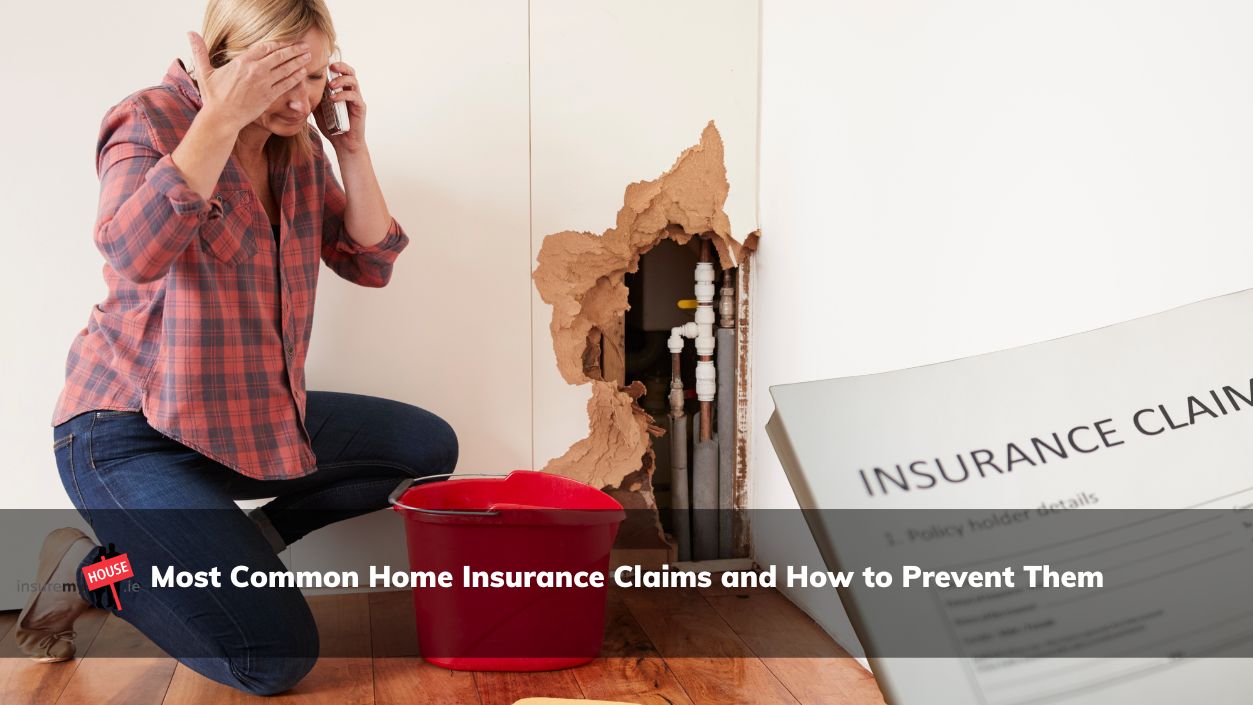Friday, 7 May 2021
5 tips for filing a roof insurance claim
Roof damage can be extensive and costly. It can be daunting noticing that your roof has suffered damage and inevitably sometimes you have to ring your home insurance company. For when that situation occurs, here's some tips.
Hell hath no fury like an Irish storm and sometimes when that Atlantic wind picks-up it unfortunately doesn't know when to stop. Storm damage is often structural damage caused by gale-force winds which can result in flooding and rainwater accessing the property. This can lead to water damage causing collapsed roofs which in turn causes damaged floors and gutted ceilings. Unfortunately, this type of destruction can be expensive to repair. Hence, whym it's vital to do your best to maintain and secure your house to avoid any possible damage.
Sometimes, however even our best efforts to be vigilant fail and we need to call our home insurance broker. When this occurs, it's important not to panic and to remember that unforeseen damage to your property is the reason you purchased your insurance in the first place. If you must make a claim on your house insurance policy, here's some essential advice to remember.
1.Ring your home insurance broker immediately.
.jpg)
While some insurers might offer an extended window of time to file a claim on your home insurance, the general rule of thumb is to act immediately. In some circumstances, a failure to notify your insurance broker as soon as possible could result in the damage getting worse at your home.
For example, if you have a leak in your roof, this could deteriorate and do some extensive damage over time. Down the line, this could act as prejudice against your claim and might cause complications with your pay-out.
Best practice is to ring your insurance broker straight away. Then they can liaise with your insurance provider, give you advice and ensure that there’s no miscommunication and everything runs smoothly with your claim.
2.Find out exactly what you're covered for.
.jpg)
Root out a copy of your policy or make a call to your insurance broker to find out exactly what you are covered for regarding your roof. Most comprehensive home insurance policies in Ireland tend to cover the entire structure of the home, including your roof, depending on the type of roof built. Provided you have this particular type of insurance, and you comply with all the original terms, you are often covered for any damage caused by lightning, fire, flooding, storm damage or falling branches.
If you don't have this particular type of cover, like for example; if your roof falls under the 'non-standard construction bracket' it's necessary to identify exactly what damage you're covered for, so you can move forward with your claim and your repairs.
In Ireland, there a number of different types of homes that are classified as non-standard construction, for example homes with thatched roofs or flat roofs. When you speak to your broker after an incident, they’ll be able to articulate what you are or aren't covered for.
3. Don't start cleaning up or repairing the damage.
.jpg)
When you have suffered extensive damage to your roof and potentially other associated rooms within your home, you might want to start organising the chaos ormrepairing the damage. However, this is typically not advised. It's best to avoid throwing away damaged items, carrying out DIY or cleaning up the mess right away.
Firstly, cleaning up damage surrounding an incident with your roof is dangerous as materials can become dislodged and you don't want to cause any additional destruction to your property or yourself.
Secondly, your provider may need to send someone out to your home to assess the damage to your roof. So, it's best to leave things as they are so your assessor can see the full picture when they arrive in order to review it. Once you’ve contacted
your broker following the incident initially, they will advise you on what action to take to prevent any further damage.
However, this is not to say that you can’t mitigate your circumstances, for example, if water is gushing from your roof, it’s okay to turn the water off at the mains. Or if it’s a leak you cannot stop by yourself, you can place buckets around the
room to reduce flooding your flooring.
Try to assess the situation and mitigate not rectify!
4. Take pictures and keep a record.
.jpg)
In some instances, your insurance company might ask for photographs of the damage in order to help work through your claim. After an incident has occurred, it's good to take multiple pictures from different angles both inside and outside
the site of the incident. This method will help to give a realistic portrayal of the extent of the damage to the person dealing with your claim. You can then send these pictures off to your insurance provider with the precise detail of
events .
It’s also a good idea to back these photos up on the cloud, just in case they lose a copy in transition or you need a copy further down the line. It’s also advisable to send a copy of your pictures to your insurance broker. They will be liaising on your behalf so it’s beneficial if they have a copy of the photos too.
Also remember to record the incident. take note of the dates and times of the incident, any actions that were taken, conversations with your broker, weather conditions and any other factors that may come up while your claim is being investigated. It is incredibly easy to forget details over time so ensuring you have all information regarding the incident and your claim recorded is incredibly important.
5.Call a competent roof specialist or 'roofer'.
.jpg)
While sometimes you will deal with a loss adjuster directly from your insurance company, other times you may be required to get the damage 'priced' by an independent contractor first to file an initial report.





